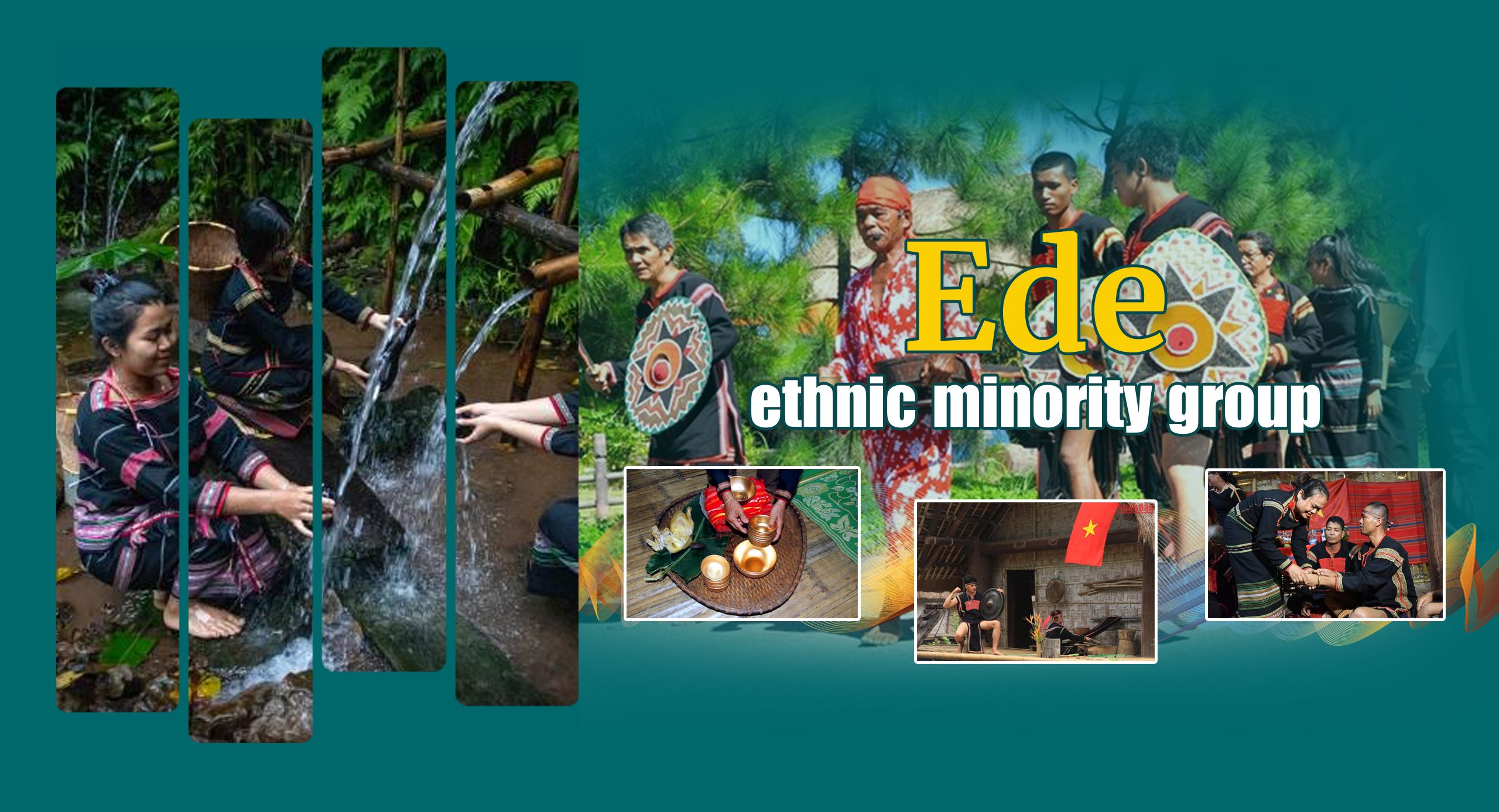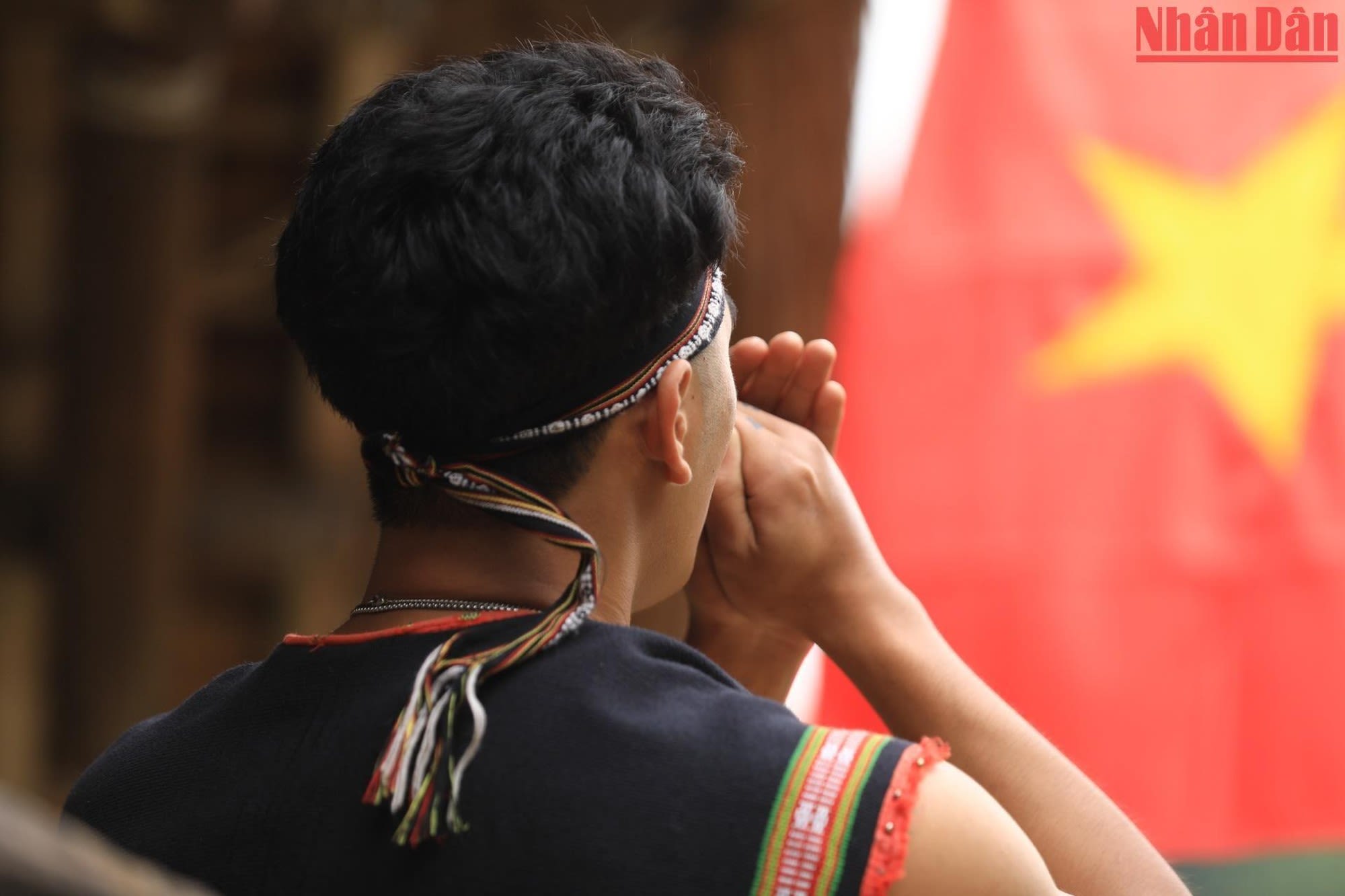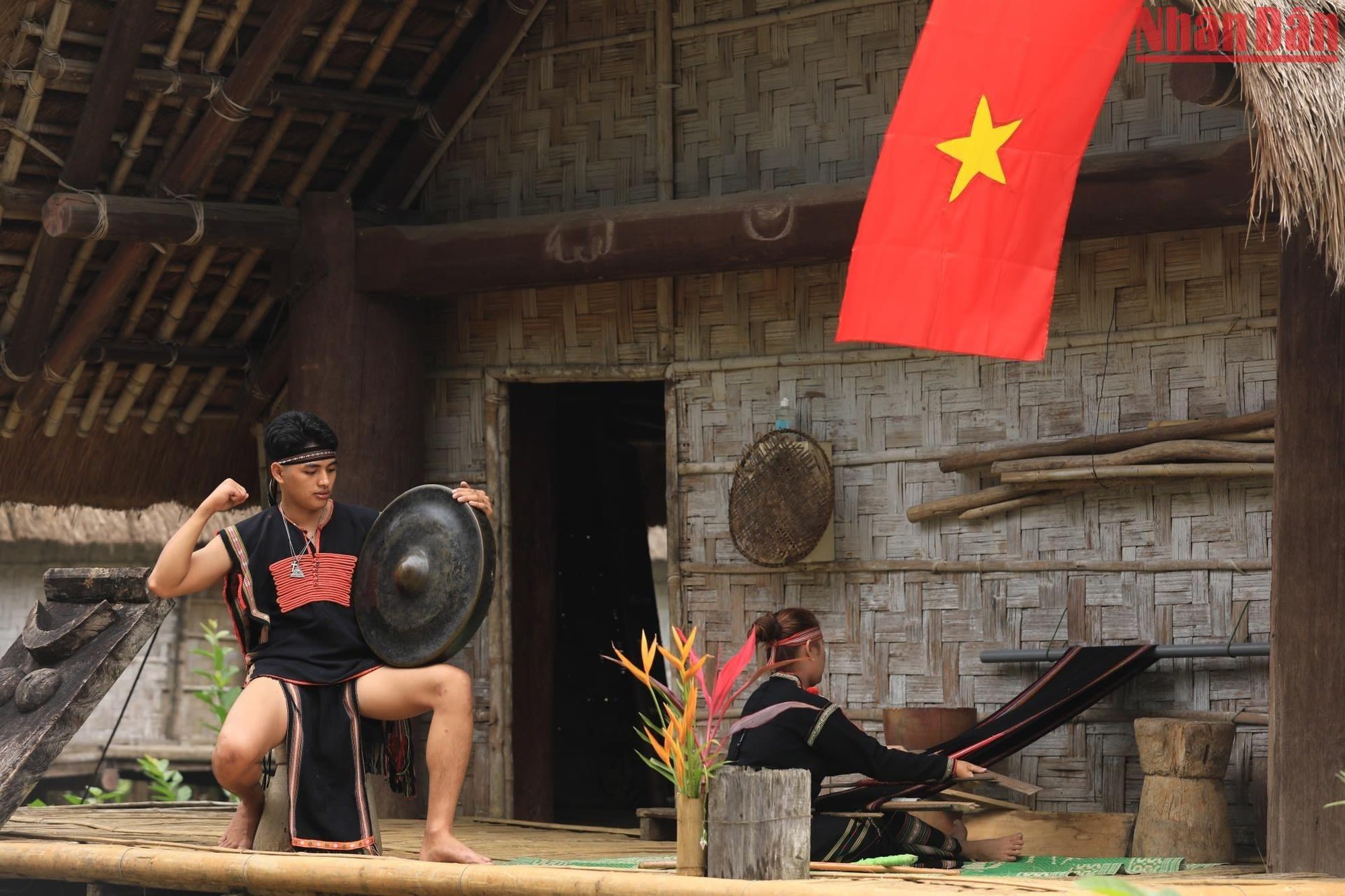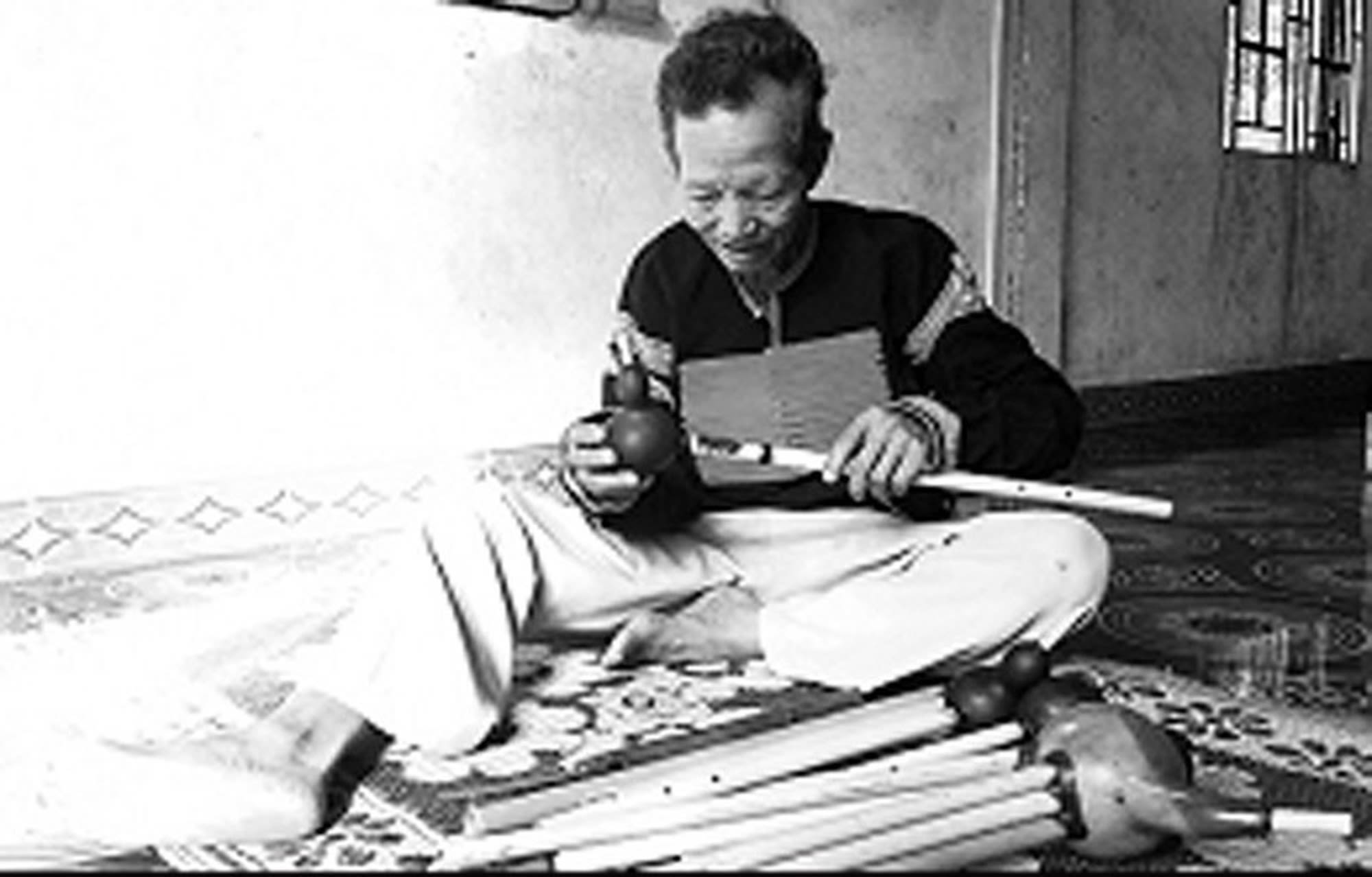
Language: The Ede language is a subfamily of the Malayo-Polynesian language group.
Residence: The main area in which Ede people currently reside in Vietnam is in Dak Lak Province, the south of Gia Lai Province, the west of Phu Yen Province, and Khanh Hoa Province.
History: The Ede people are long-standing residents of the Central Highlands. Traces of the ethnic group’s origins are seen in their epics, folk art and architecture. To date, the Ede community in Vietnam still keeps alive many matriarchal traditions.
Ede ethnic group
Ede ethnic group, which includes the many sub-groups of Kpa, Adham, Krung, Mdhur, Ktul, Dlie, Rue, Krung, and Bih, has been living in the Central Highlands for a long time.
History
The Ede people are a long-standing resident of the Central Highlands. Traces of the ethnic group’s origin are seen in their epics, folk art and architecture. The Ede community in Vietnam has continued to keep many matriarchal traditions alive to this day.
Other names: Anak Ea De, Rade (or Rhade), e De, Egar, De.
Sub-groups: Kpa, Adham, Krung, Mdhur, Ktul, Dlie, Hrue, Bih, Blo, Kah, Kdrao, Dong Kay, Dong Mak, Ening, Arul, Hwing, Ktle,£pan, etc.
Population and language
Population: According to the census on the 53 ethnic minorities as announced on April 1, 2019, the total population of the Ede ethnic group is 398,671. Of whom, 195,351 are male and 203,320 people are female. 88.9% of the population lives in rural areas.
Language: The Ede language is a subfamily of the Malayo-Polynesian language group

Photo: Thanh Dat
Photo: Thanh Dat
Geographic distribution
Currently, the main residence of Ede people in Vietnam is Dak Lak Province, the south of Gia Lai Province, the west of Phu Yen Province, and Khanh Hoa Province.

Photo: Thanh Dat
Photo: Thanh Dat
Main features
Diet: Ede people cook rice in a large earthenware or copper pot. Ede indigenous food includes salt and pepper, bamboo shoots, homegrown vegetables and tubers, fish, meat, birds and animals. Alcoholic drinks are brewed in earthen jars. Steamed sticky rice is only used on the occasion of worshiping rituals. Both men and women chew betel nuts.
Clothing: Women wear a long skirt which reaches to the toes; the top of their outfits may remain unclothed, or they may wear a short pullover vest. Men wear a loin cloth and a vest of the same style. In winter, people wrap themselves in blankets. Ede jewellery includes beaded necklaces, copper or nickel rings that are worn around the neck, wrists, and ankles. Both men and women have their teeth grinded and their ears stretched. They also blacken their teeth. Head coverings include the turban and the hat.
Housing: The traditional home of the Ede people is a house on stilts, which resembles the shape of a long boat. The house is built on two rows of pillars. Its space is divided into two main sections along the length: the Gah, which hosts the living room for community activities of the entire family, and the Ok, which includes rooms for married couples with each being separated by a bamboo partition wall.
Festivals: Ede people celebrate Tet (Lunar New Year) Festival in the 12th lunar month after the harvesting season. There is no fixed date for the celebration, it varies in each village.
After the ‘hma ngat’ festival to welcome the new-rice season, Ede people observe the ‘mnam thun’ festival to celebrate a bumper crop. This is the largest festival when rich families often offer a buffalo or an ox to the God of the Rice, while others offer roasters and pigs.
The most celebrated gods of the Ede people are Ae Die and Ae Du – the Creators, Yang Lan – The God of Earth, Yang Mdie – The God of Rice. Ede people believe that everything has its soul and agricultural gods are gods of blessing while thunderstorms, floods and evils are seen as bad gods. People have to practice rituals their whole life, and individuals have to conduct rituals to pray for happiness and health. Those who can hold such rituals, particularly major ones requiring offerings such as buffalo, oxen, and wine jars, will win much respect from the villagers.
Social relations: The Ede family is matrilineal. After the marriage, the couple live with the bride’s family, their children carry the name of the mother’s family, and the youngest daughter is the inheritor. Ede society is regulated by customary laws based on the matriarchal system. The community is divided into two lineages for the purpose of marriage exchanges. The village is called ‘buon’, which constitutes a unique kind of habitat and is the only social society. Villagers in a ‘buon’ can belong to many branches of the two lineages, but there is also a central branch. The head of the village is called ‘po pin ca’ (the master of the water wharf) and directs all affairs of the community on behalf of his wife.
Marriage: Women play an active role in the marriage. She asks a matchmaker to arrange her marriage. After the marriage, the couple live with the wife’s family. If one of the couple dies, the family of the deceased’s lineage must replace the spouse according to the ‘chue nue’ (continuing the line) custom so that the surviving spouse is not left alone. It also ensures that the thread of love tied between the two lineages, Nie and Mlo, do not interrupt-in conformity to the teachings of the ancestors.
Funerals: The ‘chue nue’ custom must be observed for each death. If the death is due to old age or sickness, the funerals are organised at home before the burial at the cemetery. In the past, if the people of one lineage died on dates near to those of the death of the same lineage, the coffins would be buried in the same grave. As Ede people believe that the other world is a reincarnation of the present world, the deceased also receive shared assets and are worshiped in the funerary structure. The ground-breaking ceremony of the funerary house is held as a big celebration.
Artistic activities: ‘Khan’ is a unique art form of Ede people. Regarding literature, ‘khan’ is a form of epic. It is recited as poem recitals and telling, accompanied with inspirational body language. Ede people also have folk songs. Ede music is well known for their ensemble of 6 flat gongs, 3 gongs with projections, a gong for rhythm, and a drum. In addition, Ede people also play bamboo instruments and calabashes like other ethnic groups in the Central Highlands region.
Production activities: Ede people grow upland rice in a rotational shifting cultivation system

Artisan Ama Loan makes trumpet from a dried gourd (Photo: NDO)
Artisan Ama Loan makes trumpet from a dried gourd (Photo: NDO)